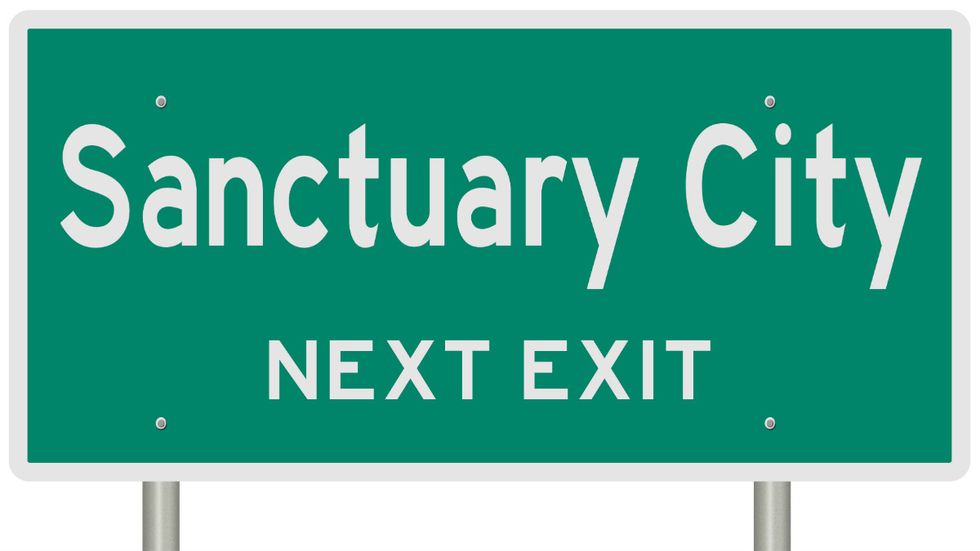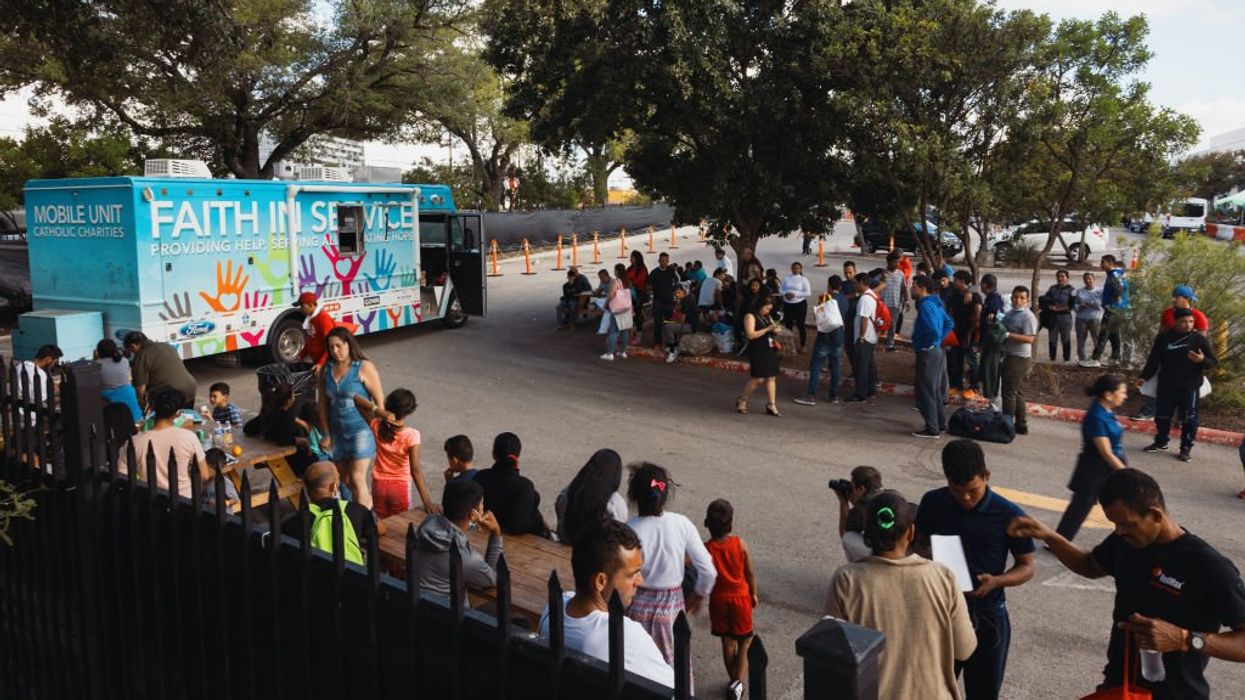
© 2024 Blaze Media LLC. All rights reserved.
It’s a lot easier to treat doctors like drug traffickers and push pain patients into suicide than it is go after sanctuary cities and the drug cartels that are responsible for the entirety of the drug (not “opioid”) crisis. Nowhere is this more evident than in Minneapolis.
In April, the Minneapolis Star Tribune wrote a story on “how Mexican drug cartels turned Minneapolis into a meth hub.” They report, as we observed a few months ago, that distribution of meth, which is not an opioid, is surging to all-time highs in this country. According to the Star Tribune, “the Mexican drug cartels that control it have hand-picked Minnesota as the regional hub for their entire Upper Midwest meth trade.” Deaths have soared from 18 in 2006 to 140 in 2016. The piece describes how illegal aliens drive the meth up I-35 from Mexico to other dealers in the city. In the case covered by the story, it was the feds who caught the individual mule on the highway, not the local officials within the city limits.
Why would that be?
What the story’s writers fail to say is that the city of Minneapolis passed an ordinance in 2003 prohibiting its officers from inquiring about immigration status. In recent months, suburbs such as St. Cloud and St. Joseph declared themselves “welcoming cities.” Minneapolis has an entire “Sanctuary City Task Force” to help push back against federal immigration authorities. More broadly, Hennepin County, the jurisdiction which encompasses the Twin Cities and holds one-fifth of Minnesota’s population, was listed by ICE’s Declined Detainer Outcome Report as a city that declines to honor ICE detainers.
Sanctuary cities offer sanctuary to drug cartels
What is meant by a “welcoming city?” A city that welcomes Mexican drug cartels. Indeed, according to ICE, Hennepin County refused to honor a detainer of a convicted Mexican meth dealer. And the politicians wonder why we have a drug crisis!
Remember that as important as border security is, interior enforcement is even more important. It only takes one successful smuggling operation to bypass border patrol, but in order to sustain a distribution network long-term, the cartels need a permanent network that can operate confidently within our country without detection. This is where sanctuary cities come into play. Almost every drug network at the primary distribution level involves illegal aliens. That was a point Rep. Steve King got Acting DEA Administrator Robert Patterson to admit emphatically. Thus, if the cities were following federal immigration law and detecting and reporting illegal aliens, particularly the criminal aliens who are picked up on drug charges, the networks would be busted up in no time. This is how MS-13, which now serves as drug distributors and enforcers, was almost eradicated last decade before making a comeback under sanctuary cities.
Sure, there will always be drugs in this country, but none of the dim bulbs in Washington are asking why they became so abundant (and therefore, so cheap and accessible to youth) beginning around 2013. It’s all because of the collapse of border security, the promise of DACA amnesty, the surge of UACs, and the permanent safe harbor of sanctuary cities.
As the Star Tribune reports, “Many of those caught supplying Minnesota’s meth have had direct ties to major, internationally known drug cartels in southern Mexico.” But imagine how much they would detect if Minneapolis worked with the feds instead of against them.
Why is the crisis happening now?
The price per pound has plummeted from $20,000 in 2009 to just $5,000 most recently, authorities say. At the retail level, investigators are finding that users can get their hands on a half gram of meth for $25 to $30.
Guess what happened between 2009 and the present? Obama dismantled immigration enforcement, bringing on the DACA surge and the rise of sanctuary cities. That is how the drug networks can operate out in the open and keep the supply so abundant and cheap. Almost all of the meth comes into the country from the southwest border, and seizures by the Border Patrol tripled during Obama’s second term and have skyrocketed with the border surge of Central Americans. Meth deaths are surging across the country, along with cocaine, neither of which is opiate-based. According to preliminary data from the CDC, fatalities from meth overdoses have spiked 121 percent from 2015 through October 2017, while cocaine deaths have surged by 140 percent. Obviously, heroin and fentanyl remain the deadliest threats, and fentanyl is now being laced into the meth and cocaine as well as heroin. This is all an illicit drug problem fueled by immigration, border, and sanctuary policies.
Yet, all of these politicians virtue-signaling over the “opioid crisis” not only won’t address these issues, they are seeking more amnesty and sanctuary policies.
Treat pain patients like criminals and “welcome” drug traffickers
Meanwhile, it’s not just the drug addicts who are victims of our immigration policies, it’s the pain patients.
With no science or data to drive their decision, the CMS will cut off all high-dose prescription painkillers for millions of seniors who are the least likely to overdose beginning next year – all to cover for the open-borders agenda and the jailbreak of drug traffickers. As Betsy McCaughey wrote last week, “Fewer than one in five overdose victims [in New York City] even had a prescription drug in their system, and it was virtually never the only drug. This has nothing to do with doctors and pain patients who have been stable on these drugs for years.” Prescription overdoses are at six-year lows in many states, and prescriptions in general have been as severely restricted as can be. Even at the height of the opioid prescribing trend last decade, the percentage of chronic pain patients who became addicted and overdosed was exceptionally low.
Shockingly, the very same politicians hurting pain patients are the ones who, according to the New York Times, are taking refuge in promoting amnesty in order to save their careers. Have these “drug cartel and MS-13 Republicans” ever given some thought to the fact that these very policies serve as the lynchpin to the drug and gang crises and that, perhaps, if they made that case to their constituents who are terrified about both problems, they’d win over even more voters?
Furthermore, all these members just voted for a bill that will enable most of the worst federal prisoners, particularly drug traffickers, to spend up to 40 percent of their sentences in very tenuous home confinement arrangements. Imagine putting all those professional drug traffickers with connections to the Mexican and Columbian drug cartels out on the streets at this time.
How many more Americans have to be sacrificed at the altar of amnesty and “criminal justice reform” before we speak the truth on the drug crisis?
#mc_embed_signup{background:#fff; clear:left; font:14px}
/* Add your own MailChimp form style overrides in your site stylesheet or in this style block.
We recommend moving this block and the preceding CSS link to the HEAD of your HTML file. */
Want to leave a tip?
We answer to you. Help keep our content free of advertisers and big tech censorship by leaving a tip today.
Want to join the conversation?
Already a subscriber?
Blaze Podcast Host
Daniel Horowitz is the host of “Conservative Review with Daniel Horowitz” and a senior editor for Blaze News.
RMConservative
Daniel Horowitz
Blaze Podcast Host
Daniel Horowitz is the host of “Conservative Review with Daniel Horowitz” and a senior editor for Blaze News. He writes on the most decisive battleground issues of our times, including the theft of American sovereignty through illegal immigration, theft of American liberty through tyranny, and theft of American law and order through criminal justice “reform.”
@RMConservative →more stories
Sign up for the Blaze newsletter
By signing up, you agree to our Privacy Policy and Terms of Use, and agree to receive content that may sometimes include advertisements. You may opt out at any time.
© 2024 Blaze Media LLC. All rights reserved.
Get the stories that matter most delivered directly to your inbox.
By signing up, you agree to our Privacy Policy and Terms of Use, and agree to receive content that may sometimes include advertisements. You may opt out at any time.



